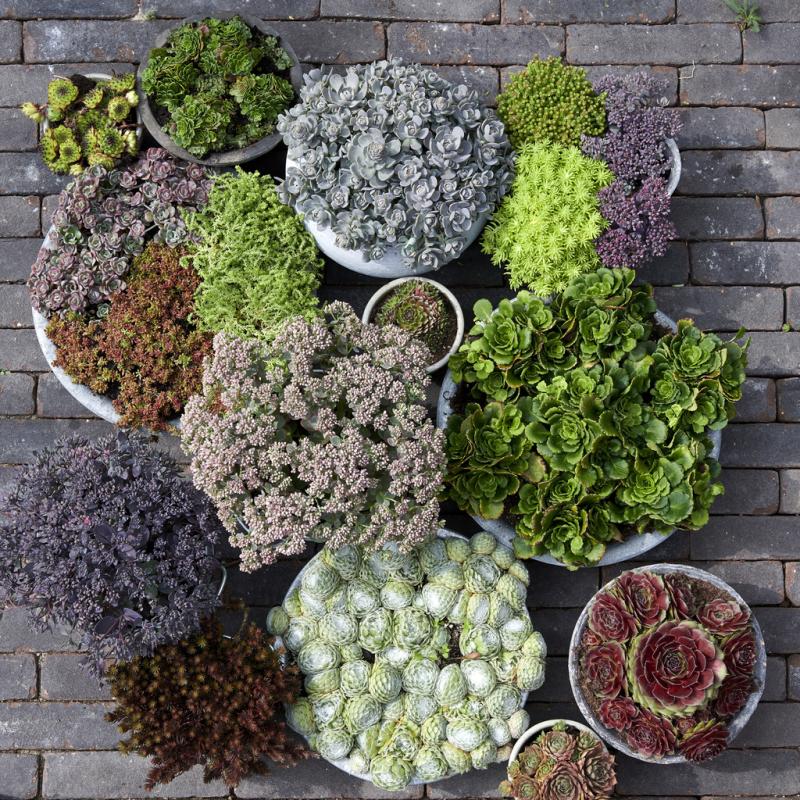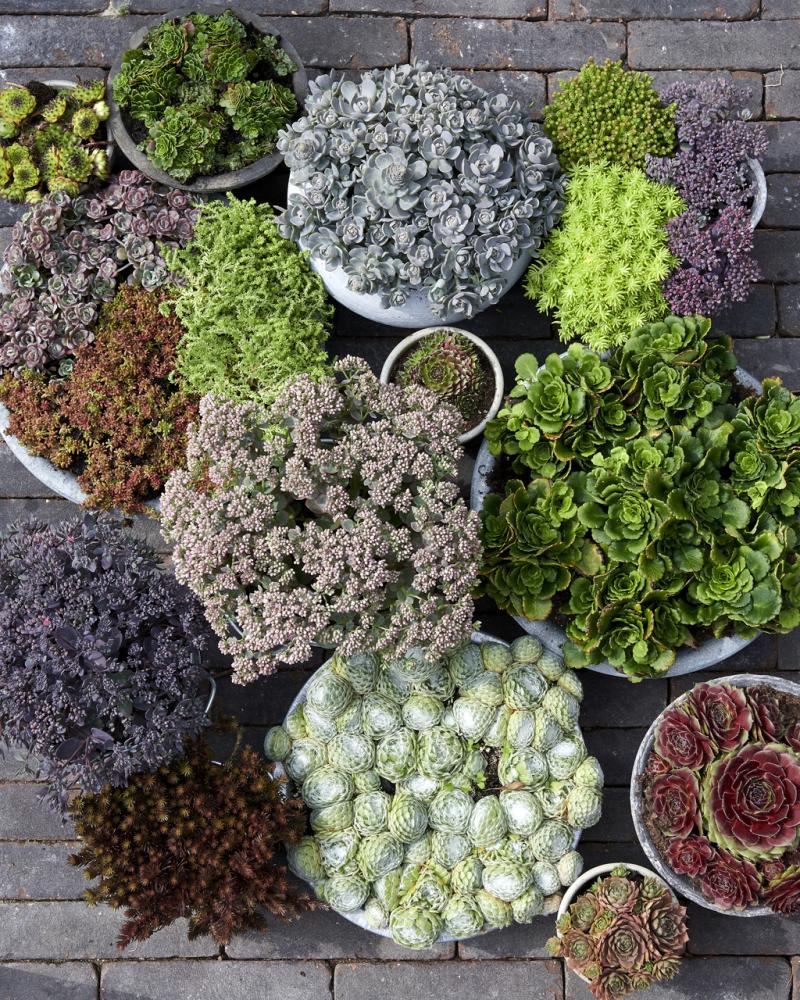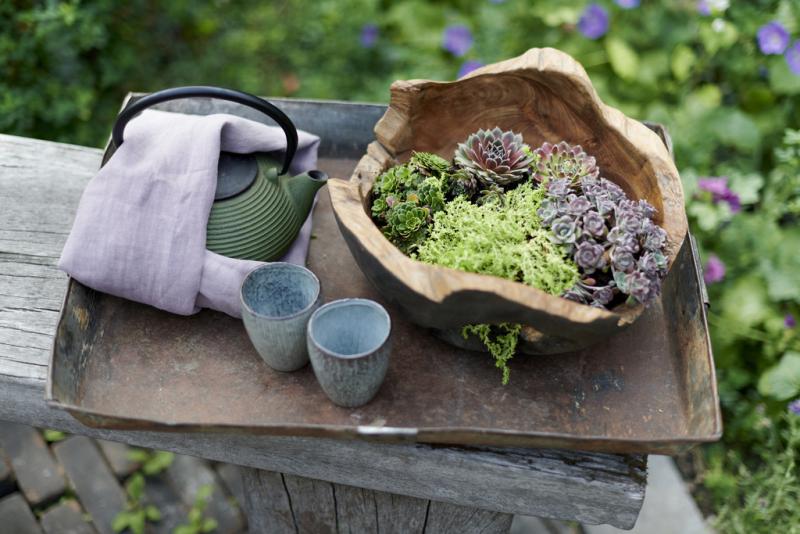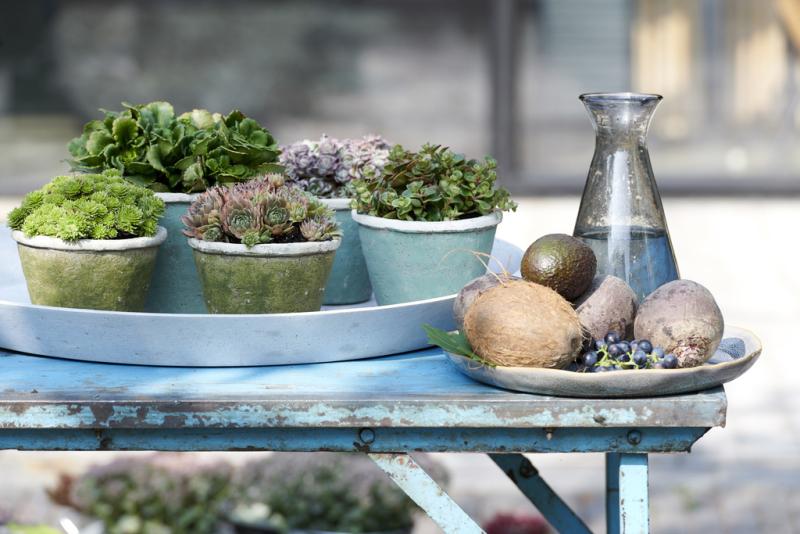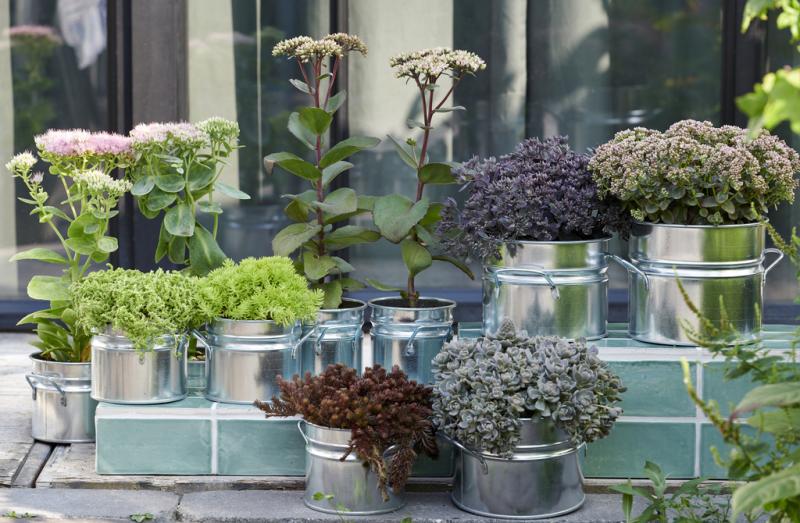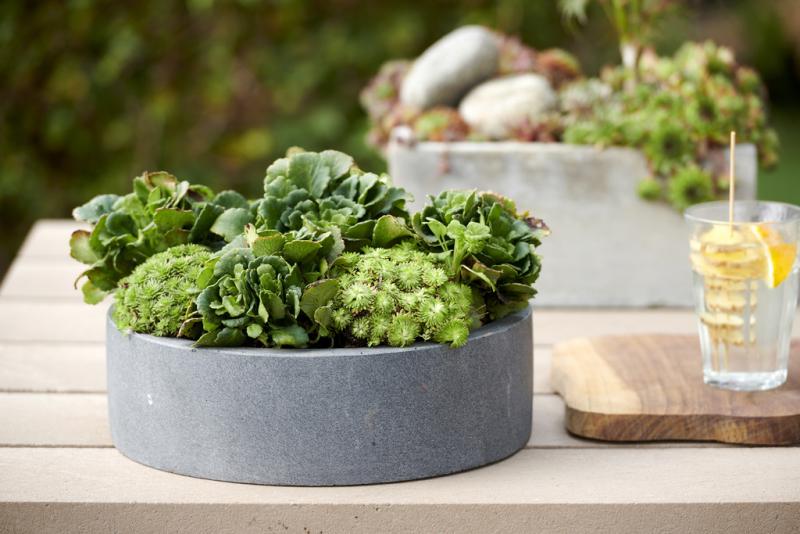Green Covering: October Garden Plants of the Month
Cool in summer, warm in winter and green throughout the year: covering plants are becoming increasingly popular, and with our Green Covering plants selection such as stonecrop, sempervivum and rockfoil, which can also be used to create living roofs or rock gardens.
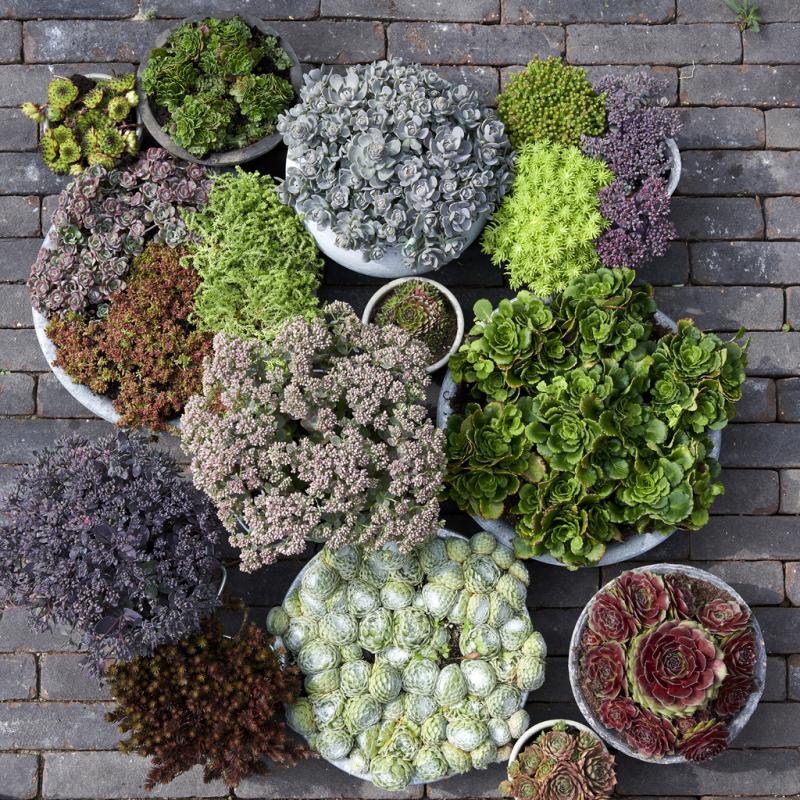
Origin
Rockfoil and sempervivum particularly are found in mountainous regions such as the Alps, Dolomites and Caucasus, whilst stonecrop grows throughout the northern hemisphere, particularly in dry rocky regions.
Green Covering plants range
All the Green Covering plants in this selection are succulents. A succulent is a plant that stores water in its roots, stem or leaves to get through periods of drought. There is a choice of over a thousand cultivars. They are often sold in mixed trays.
- Stonecrop produces white, yellow and red flowers. In addition to the well-known ground-covering species there are also a few species that grow a bit taller.
- Rockfoil grows in decorative rosettes with white, red, pink or purple flowers that do not get taller than 15 cm.
- Sempervivum blooms between April and August with pale yellow, white or pink star-shaped flowers that rise some 10 cm above the rosette on palm-like stems - quite a sight!
Good to know
Green Covering plants are often offered in a mixed mat similar to turf: roll it out, give it some water, leave it to secure itself. This is an excellent option to make life easier for your customers.
What to look for when buying Green Covering plants
- Pot size and height are important, but particularly check that the pots are adequately filled: a sturdy plant has a better chance of surviving than a wispy specimen.
- Not all the succulents in this group are ground-covering. Check that you have the right cultivar.
- Since Green Covering plants in a pot do not really fire the imagination, an attractive label showing the species and what it will look like is highly recommended.
- The plants must be free of pests and diseases, although Green Covering plants are not prone to them.
- Check that the soil is not too wet: standing water in the pots is fatal for succulents.
Care tips for customers
- Remove weeds and tree seedlings twice a year.
- If the weather is very dry for a long time, water with a hose.
- Feed once a year.
Display & sales tips
In theory it is possible to create squares or geometric patterns with stonecrop, rockfoil and sempervivum. In practice a mixture works best. In that way the plants create an attractive scape, the shades of green, pink and purple work well together, and they will rapidly form a dense carpet on a roof. Demonstrating that is the best way of inspiring customers, but stonecrop, sempervivum and rockfoil can also be scattered around the garden, patio or balcony in bowls and pots. The soft, voluminous look means they look like big green cushions that create a friendly atmosphere. They also provide fresh green accents at the time of year when most greenery is entering hibernation.
7 steps to a living roof
This is good starting point for anyone seeking to offer customers inspiration and advice on creating a living roof:
Step 1 Carefully brush the existing roof clean.
Step 2 Make sure that the drainpipe remains clear by placing a wire guard over it.
Step 3 Place plenty of gravel around the guard so that the soil cannot get washed into it.
Step 4 Roll out a drainage mat on the roof and cut it size.
Step 5 Cover the mat with an artificial substrate for plants.
Step 6 Distribute the plants across the substrate or roll out a ready-made sedum mix mat.
Step 7 Lightly spray your brand-new living roof so that it can absorb moisture.
Images of Green Covering plants
You can download and use the images below free of charge if you credit Thejoyofplants.co.uk.
Instagram: @thejoyofplants
Facebook: @thejoyofplants
Twitter: @thejoyofplants
Green Covering plants poster
You can download the poster using the link below:

